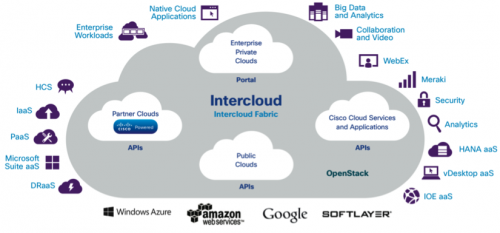
Intercloud: A world of many Clouds
In today’s world of consumerism we expect to be in control. We insist on choice, flexibility and freedom. Whether it be for finance, insurance or even digital TV packages, comparison sites have enabled us to look around for the best price. Saving a lot of legwork by making it incredibly easy for us, the consumer, to maintain control; choose our level of service and to keep prices down.
Within the corporate technology world, this type of control and choice is managed in an entirely different way. We, as industry experts, don’t have the comparison site ‘easy button’ available to us. It’s necessary for us to maintain a detailed level of knowledge across many vendors and disciplines, to ensure that we are delivering the best service.
We live in a world of many clouds, including those that offer infrastructure services, or ‘IaaS’. Providers such as Cisco, Amazon, Google, Microsoft and Rackspace offer varying levels of service in this space.
The difference with Intercloud vs. managing each cloud individually is that you can maintain control over your assets/workloads easily across providers. This puts you in control of rising costs and service levels, ultimately being able to survey using a “compare the market” approach. Please note. Other comparison websites do exist ;).
There are many reasons for using Cloud. A cloud is defined by use of automation, orchestration, self-service and service monitoring.
Cloud use cases include:
- Self Service, Development and Testing
- Automated Provisioning and Shadow IT Control
- Capacity Augmentation, Infrastructure Bursting
- Disaster Recovery and Backup
A lot of organisations are discovering that “Shadow IT” is occurring – this is when organisational departments decide to circumvent IT and go direct to cloud providers, given the ease of provisioning and self service portal capabilities. Project managers are circumventing slow IT and are often getting the credit cards out to pay for IaaS services due to the perceived increase in agility and speed. This poses many security risks for the CIO (and CSO) in terms of asset management and tracking. For IT departments to maintain relevance and be seen as an enabler they have to adapt to the growing demands of the organisation.
It’s difficult to find the right balance of infrastructure to satisfy the ‘normal’ requirements as well as account for peak usage. Taking E-commerce as an example, peak periods are short but burst very sharply with extremely high periodic utilisation of resources. The busiest weeks can account for a 3-4 fold increase in workload utilisation. With this type of resource requirement pattern, how does an organisation maintain the maximum ROI for its infrastructure services? It isn’t cost effective to buy x times the infrastructure for it to sit idle for most of the year, is it?
Intercloud Fabric: Elastication/Glue between clouds
This brings me onto Intercloud Fabric as we require a way of joining these clouds together. If we’re to use the Cisco Intercloud approach which is to connect all clouds who provide infrastructure services to enable you to utilise infrastructure at times of need, together using a single policy then we need to build a network between clouds. Overlay networks enable more flexibility and control for workload organisation. Without this, moving workloads between private and public cloud would involve a changes of IP addresses and significant downtime every time something moves.
Moving workloads into the cloud brings its own challenges, especially from a lock-in perspective! If you move workloads to-and-from a cloud provider, how do you stay in control of rising costs or degrading service levels? Moving workloads between clouds keeps you, the customer, in control, but it’s not an easy task to build this capability.
The proviso of Intercloud Fabric is to provide the glue that welds the world of many clouds together allowing networks to span multiple clouds. The moving of workload appears more like a ‘drag and drop’ between clouds with Intercloud.
Hybrid Cloud is the best way to define most organisation’s infrastructure offerings at the moment and for the foreseeable future. Hybrid cloud accounts for a blend of private and public cloud which keeps the customers in control.
For further information on Intercloud and Intercloud Fabric take a look at www.cisco.com/go/intercloud and www.cisco.com/go/intercloudfabric
Tags:




